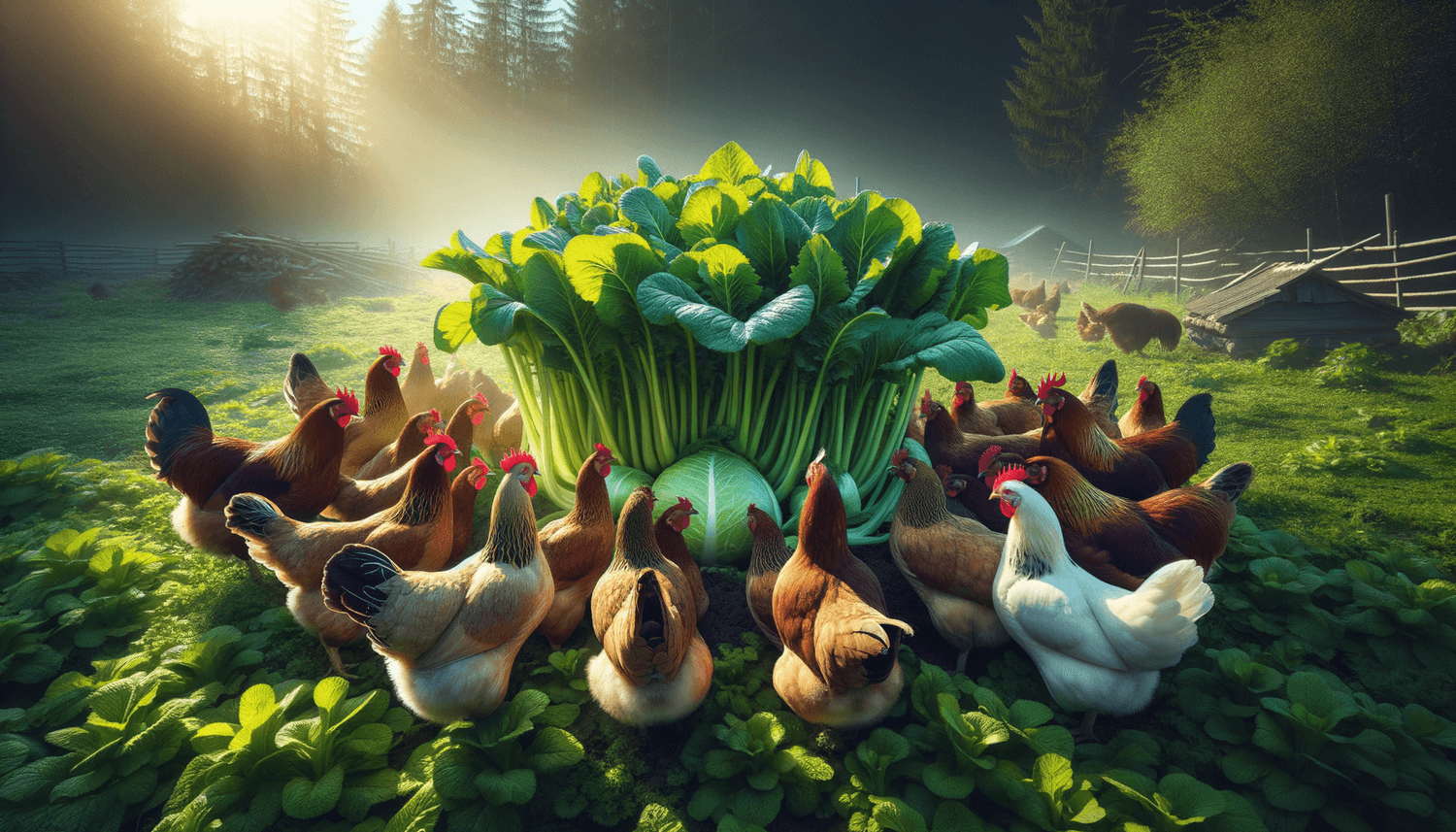Hey there, fellow chicken enthusiasts! Ever find yourself admiring the fiery elegance of horseradish leaves and wondering if your feathered friends can join in on the fun? Well, you’re in the right place! In this cluck-tastic blog post, we’ll be pecking our way through the ins and outs of whether chickens can eat horseradish leaves or not, the importance of a balanced diet, nutritional value, and of course, how to whip up a poultry-approved horseradish leaf treat that’ll have your chickens crowing for more. So fluff up those feathers and let’s dive in!
Can chickens eat horseradish leaves?
Yes, chickens can indeed eat horseradish leaves! These nutrient-filled greens can be a safe and beneficial addition to your flock’s diet. However, it’s essential to introduce horseradish leaves moderately as a treat, ensuring they still get a well-balanced and diverse diet to maintain optimal health.
Finding Balance: A Well-Rounded Diet for Your Chickens
Just like us humans, chickens require a balanced diet to keep them clucking and thriving. To ensure they get all the essential nutrients, vitamins, and minerals they need, a high-quality chicken feed should be the foundation of their daily meals. In fact, chicken feed should constitute around 80-90% of their overall diet, so it’s crucial to choose a premium product.
Now, let’s chat about the remaining 10-20% of their diet. Like the cherry on top of a sundae, the addition of scrumptious treats such as fruits and vegetables can bring variety and excitement to their meals. These nutrient-dense morsels not only enrich their diet but also provide physical and mental stimulation, keeping your feathered friends happy and healthy. So, remember the golden rule: chicken feed is key, but a treat here and there will make both their day and yours!
Nutritional value of horseradish leaves for chickens.
Horseradish leaves offer a multitude of nutritional benefits for your backyard chickens. These greens are chock-full of essential vitamins and minerals that contribute to the overall health of your feathered friends. One of the key selling points of horseradish leaves as a chicken treat is their rich vitamin content – including vitamins A, C, and K, all of which play critical roles in maintaining healthy skin, feathers, immune function, and blood clotting abilities.
In addition to these vitamins, horseradish leaves also bring some attractive minerals to the table. They contain calcium, which is vital for eggshell formation and maintaining robust skeletal systems in your birds. Significant levels of magnesium, potassium, and iron can also be found in these leafy greens, helping with muscle function and the production of red blood cells. Moreover, horseradish leaves boast a high water content, which aids in hydration and digestion, keeping those fluffy darlings well-hydrated and comfortable.
Overall, horseradish leaves not only add variety to your chickens’ menu but also provide them with essential nutrients for their well-being. Offering these leaves as an occasional treat will help to keep your flock healthy, energetic, and thriving. Happy chickens lay better eggs, and that’s something every backyard chicken keeper can be excited about!
Nutrition table of horseradish leaves for chickens.
| Information | Description |
|---|---|
| Nutritional Value | High in vitamins A, C, K; calcium, magnesium, potassium, and iron. |
| Suggested Serving Size | A few leaves per chicken, offered occasionally as a treat. |
| Safe Feeding Practices | Introduce gradually and monitor for any adverse reactions. |
| Preparation | Wash leaves thoroughly, chop or tear into smaller pieces to prevent choking. |
| Potential Risks | Overfeeding may lead to imbalanced diet, feed in moderation. |
| Hydration | High water content aids in hydration and digestion. |
| Digestion | Contains fiber, promoting healthy digestion and gut function. |
| Seasonal Availability | Readily available in spring and summer; may be harder to find in fall and winter. |
| Other Benefits | Provides variety and mental stimulation; supports immune function and overall health. |
Preparing Horseradish Leaves for Your Chickens
When introducing horseradish leaves to your chickens, it’s essential to follow a few simple steps for safe preparation. First, make sure to wash the leaves thoroughly, as you would with any other vegetable for human consumption. This will remove any dirt, pesticide residue, or other contaminants that could be harmful to your flock.
Next, chop or tear the leaves into smaller pieces to prevent choking hazards. Tearing them by hand can add a personal touch, but feel free to use a knife if you prefer. Remember, while chickens don’t have teeth, they do have a unique digestive system with a muscular gizzard to help grind and break down their food. Smaller pieces will aid in the digestion process and limit any potential discomfort.
Keeping an Eye Out for Potential Reactions
As with any new food, it’s important to closely monitor your chickens for potential adverse reactions after feeding them horseradish leaves. Although generally safe, individual sensitivities can occur, so keep an eye out for any sudden changes in behavior, appearance, or energy levels. In the rare event that a negative reaction does occur, remove the horseradish leaves from their diet and consult with a veterinarian for guidance.
And Don’t Forget about Chicken Happiness!
Feeding horseradish leaves as an occasional treat is not only about the nutritional benefits. It’s also about making your chickens happy! The addition of variety and new flavors to their diet gives them something to crow about and boosts their overall contentment. Healthy and joyous chickens are more likely to lay those delicious and nutritious eggs that we all love. So, next time you spot some horseradish leaves at the market, bring some home for your backyard flock and enjoy the clucking excitement!

















